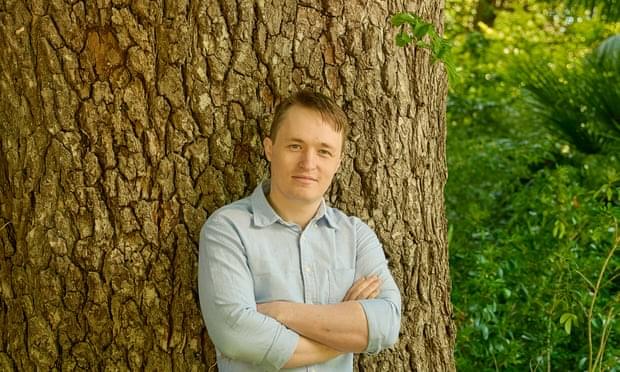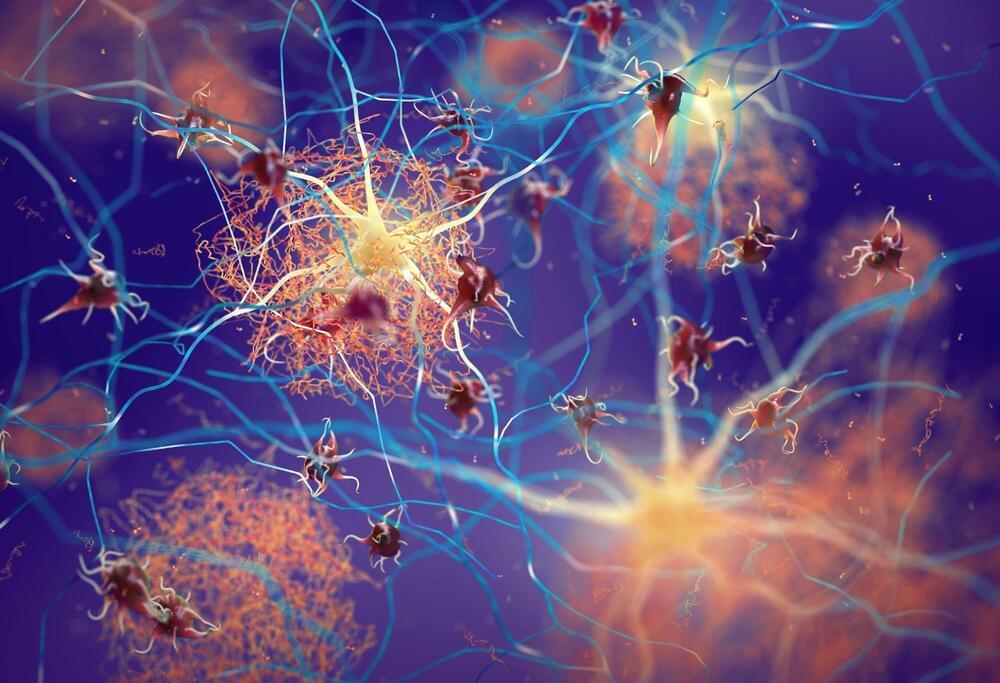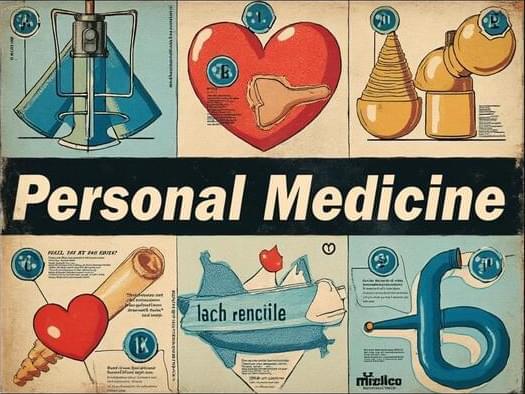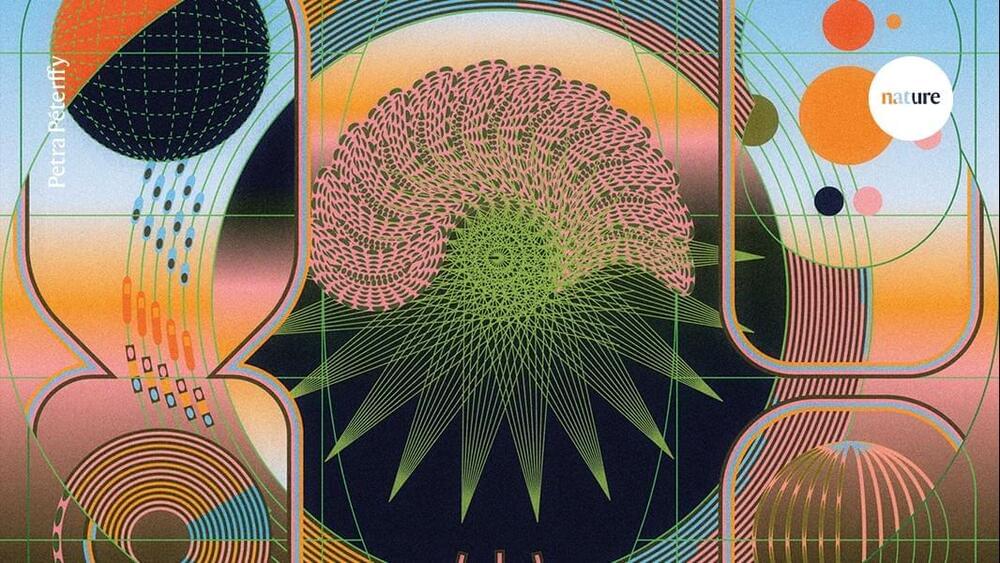A brilliant young scientist believes that if we preserve our brains, they could be revived in the future, helping us live for centuries.


A brilliant young scientist believes that if we preserve our brains, they could be revived in the future, helping us live for centuries.
Researchers at TU Delft have discovered that E. coli bacteria can synchronize their movements, creating order in seemingly random biological systems. By trapping individual bacteria in micro-engineered circular cavities and coupling these cavities through narrow channels, the team observed coordinated bacterial motion. Their findings, which have potential applications in engineering controllable biological oscillator networks, were recently published in Small.
An audience clapping in rhythm, fireflies flashing in unison, or flocks of starlings moving as one—synchronization is a natural phenomenon observed across diverse systems and scales. First described by Christiaan Huygens in the 17th century, synchronization was famously illustrated by the aligned swinging of his pendulum clocks. Now, TU Delft researchers have shown that even E. coli bacteria—single-celled organisms only a few micrometers long—can display this same phenomenon.
“This was a remarkable moment for our team,” said Farbod Alijani, associate professor at the Faculty of Mechanical Engineering. “Seeing bacteria ‘dance in sync’ not only showcases the beauty of nature but also deepens our understanding of the microscopic origins of self-organization among the smallest living organisms.”

In a recent study published in the journal Cell Reports, researchers used the machine learning (ML)-based Variational Animal Motion Embedding (VAME) segmentation platform to analyze behavior in Alzheimer’s disease (AD) mouse models and tested the effect of blocking fibrinogen-microglia interactions. They found that AD models showed age-dependent behavioral disruptions, including increased randomness and disrupted habituation, largely prevented by reducing neuroinflammation, with VAME outperforming traditional methods in sensitivity and specificity.
Background
Behavioral alterations, central to neurological disorders, are complex and challenging to measure accurately. Traditional task-based tests provide limited insight into disease-induced changes. However, advances in computer vision and ML tools, such as DeepLabCut, SLEAP, and VAME, now enable the segmentation of spontaneous mouse behavior into postural units (motifs) to uncover sequence and hierarchical structure, offering scalable, unbiased measures of brain dysfunction.
Australian spies are on the offensive against cyber criminal networks and foreign actors seeking to disrupt democracies. But our intelligence agencies have a long history playing a key role in secret battles. Subscribe: https://ab.co/3yqPOZ5
ABC News In-depth takes you deeper on the big stories, with long-form journalism from Four Corners, Foreign Correspondent, Australian Story, Planet America and more, and explainers from ABC News Video Lab.
Watch more ABC News content ad-free on ABC iview: https://ab.co/2OB7Mk1
For more from ABC News, click here: https://ab.co/2kxYCZY
Get breaking news and livestreams from our ABC News channel: / newsonabc.
Like ABC News on Facebook: / abcnews.au.
Follow ABC News on Instagram: / abcnews_au.
Follow ABC News on Twitter: / abcnews.
Note: In most cases, our captions are auto-generated.

The integration of quantum computing into personalized medicine holds great promise for revolutionizing disease diagnosis, treatment development, and patient outcomes. Quantum computers have the potential to process vast amounts of genetic data much faster than classical computers, enabling researchers to identify patterns and correlations that may not be apparent with current technology. This could lead to breakthroughs in understanding the genetic basis of complex diseases and developing targeted treatments.
Quantum computing also has the potential to revolutionize medical imaging by enabling the simulation of complex magnetic resonance imaging (MRI) and positron emission tomography (PET) scans. Quantum algorithms can efficiently process large-scale imaging data, enabling researchers to reconstruct high-resolution images that reveal subtle details about tissue structure and function. This has significant implications for disease diagnosis and treatment, where accurate imaging is critical for developing effective treatments.
The use of quantum computing in personalized medicine raises important ethical considerations, such as concerns about privacy and informed consent. The ability to rapidly analyze large amounts of genetic data also raises questions about how this information should be used and shared with patients. Regulatory frameworks will play a crucial role in shaping the development and deployment of quantum computing in personalized medicine, balancing the need to promote innovation with the need to protect patient safety and privacy.



I had wondered if AI could just learn and advance from it s users.
During your first driving class, the instructor probably sat next to you, offering immediate advice on every turn, stop and minor adjustment. If it was a parent, they might have even grabbed the wheel a few times and shouted “Brake!” Over time, those corrections and insights developed experience and intuition, turning you into an independent, capable driver.
Although advancements in artificial intelligence (AI) have made self-driving cars a reality, the teaching methods used to train them remain a far cry from even the most nervous side-seat driver. Rather than nuance and real-time instruction, AI learns primarily through massive datasets and extensive simulations, regardless of the application.
Now, researchers from Duke University and the Army Research Laboratory have developed a platform to help AI learn to perform complex tasks more like humans. Nicknamed GUIDE for short, the AI framework will be showcased at the upcoming Conference on Neural Information Processing Systems (NeurIPS 2024), taking place Dec. 9–5 in Vancouver, Canada. The work is also available on the arXiv preprint server.
